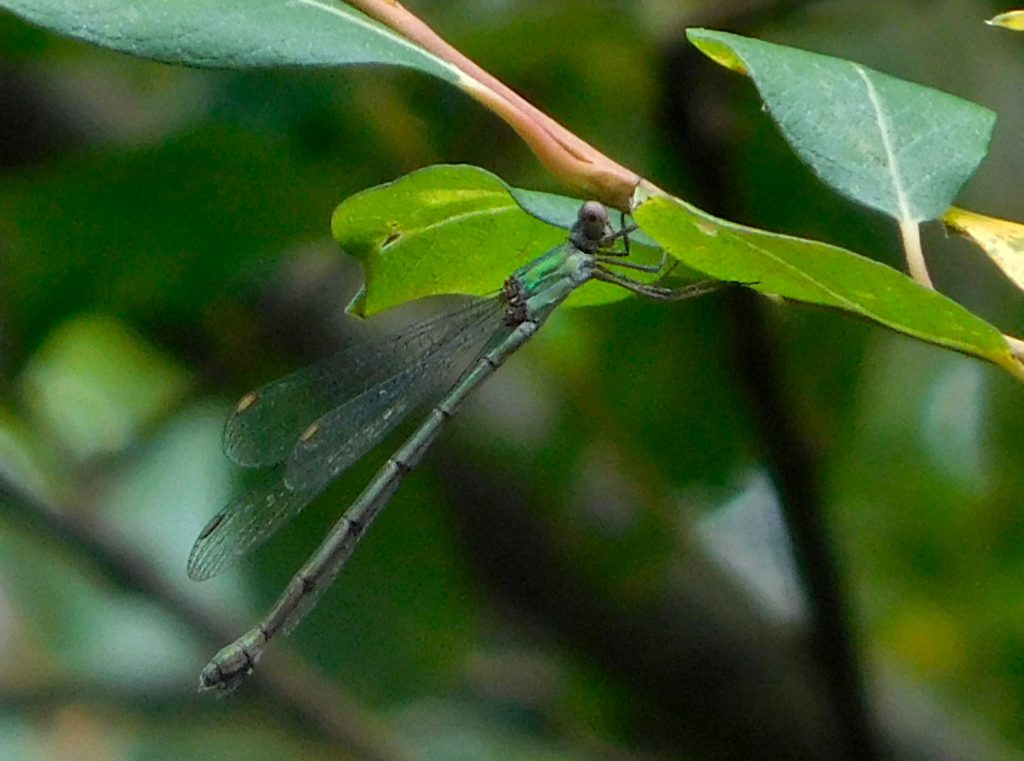
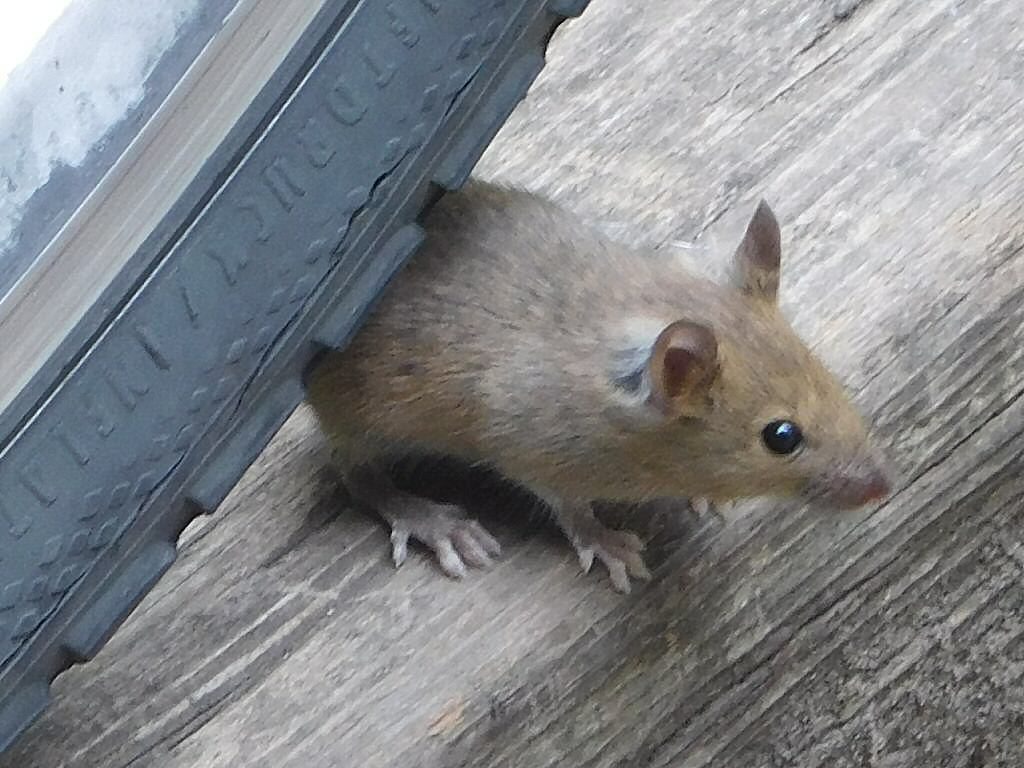
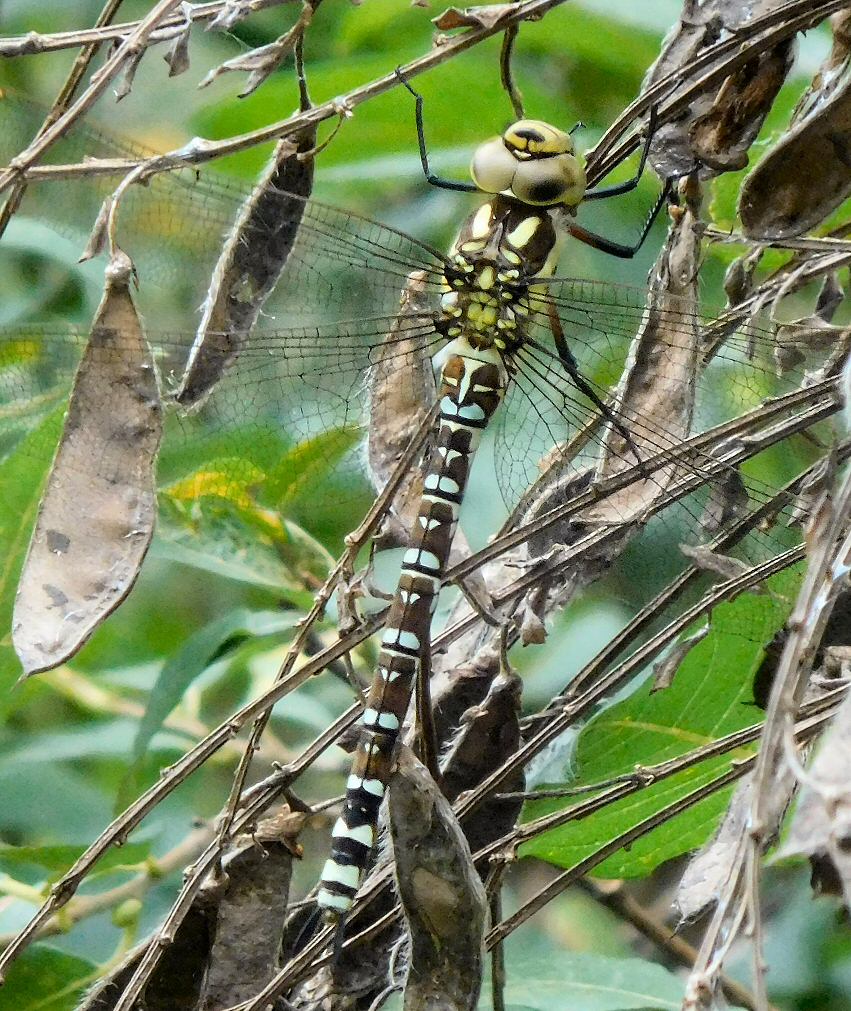
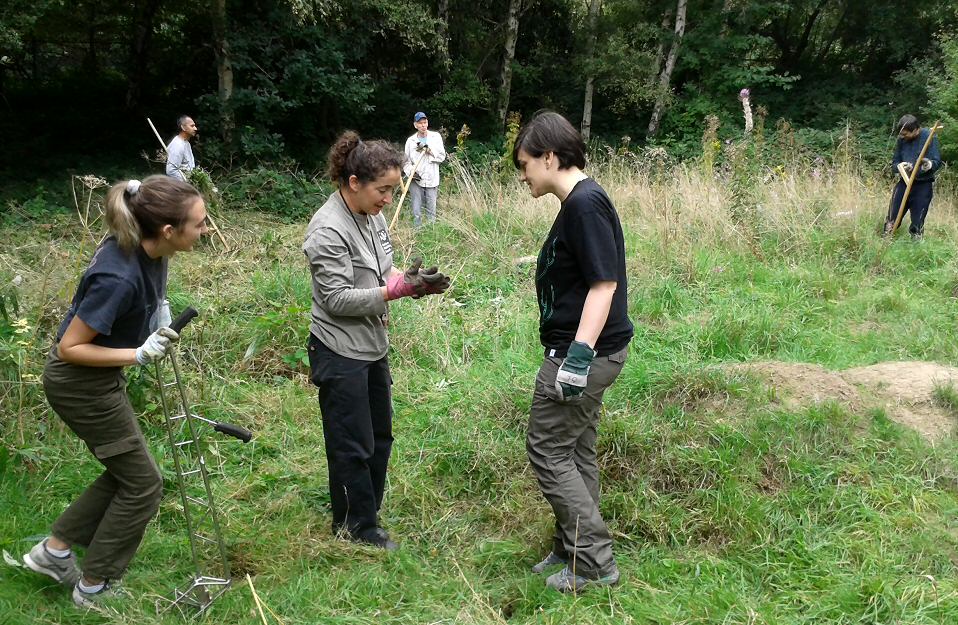




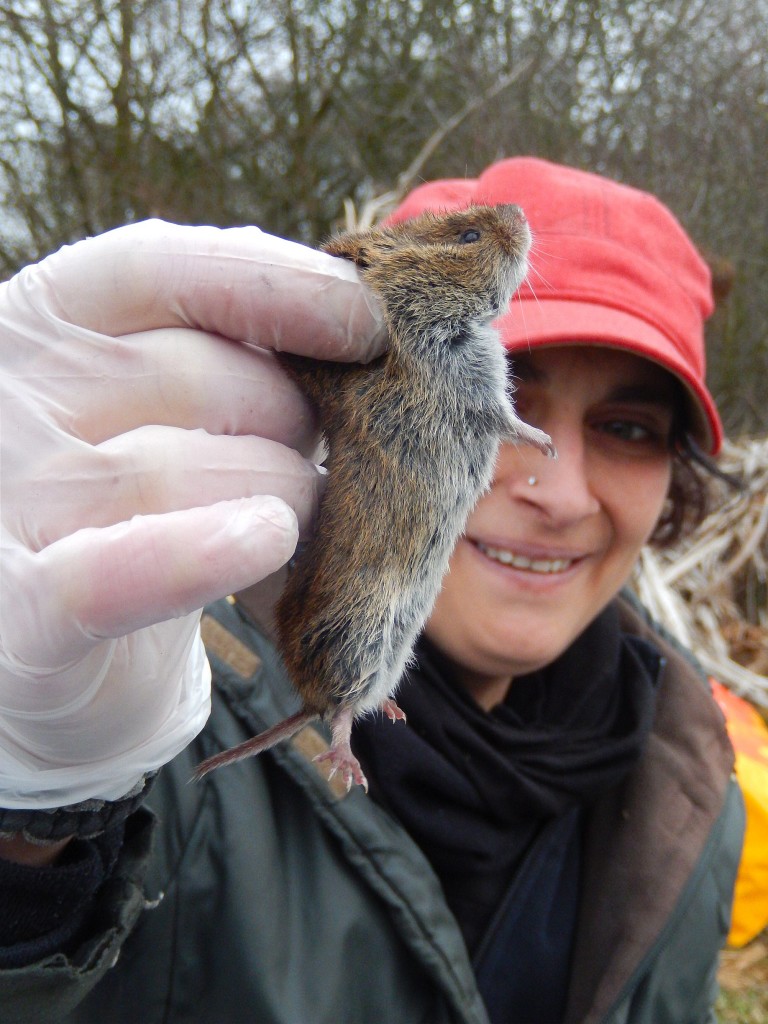
Yes, luck was with the Vole Patrol today. We caught two species of Vole as well as the inevitable Woodmice.
The Field Vole is, as you can see, grey-brown above, and is softly countershaded a la Abbott Thayer (who thought all animals were camouflaged in this way, even flamingoes, but I digress) from top to bottom with no sudden dividing line between dark and light. It’s diurnal and (therefore) has small eyes. And it has a notably short tail, 30% of its head/body length.
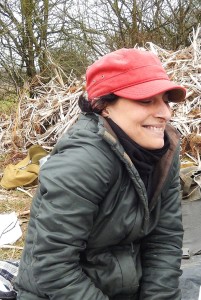
Huma, despite days with almost no sleep, looked and sounded delighted we’d caught this species.
We had turned up in the still-sleeping suburb of Hillingdon before 6am. The journey in was strangely easy on the empty roads, a fox running across in front of me in Acton with a jaunty air.
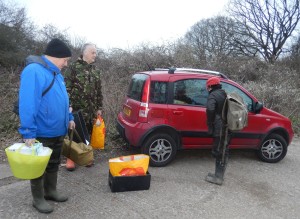
It was at once obvious on arriving that Gutteridge Wood, made a nature reserve by the Greater London Council in its closing days, was something different — an ancient woodland with fine Oaks as “standards” in between coppice stools of Hazel (cut on a regular cycle, so many shoots come up as useful poles from each stump), with Yew and Holly here and there, and English Bluebells and Woodrush as ground cover.
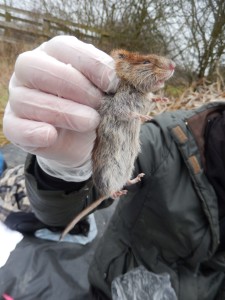
The team found a Bank Vole in one of the Meadow traps. It is a nocturnal mammal, unlike the Field Vole, and accordingly has big eyes (for seeing in the dark). It has a longer tail, 50% of its head/body length (try measuring it!), is appreciably redder than the Field Vole, and is more sharply white below.
While people were out picking up traps in the wood, a Woodcock flew right overhead, just above the bare treetops. Its enormously long beak and plump gamebird body were unmistakable, which was just as well because I haven’t seen one flying for many years now: a fine sight. Greater Spotted Woodpeckers drummed loudly; a Green Woodpecker gave its cheerful loud call. I guess you could easily guess what habitat I was in just from the names of those three species!
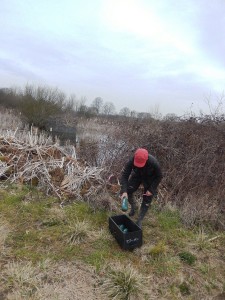
The meadow and pond area was once a sewage works; if you peer closely at the pond in the photograph here, you’ll see behind the Reed Mace a circular brick structure left over from those days. It looks very much part of the waterscape today.
The Vole Patrol puts traps beside water, as here, along meadow edges (as above, for the voles), in a grid in the woods, and a few feet off the ground in the trees, to sample the small mammals in the different habitats on each reserve. Unsurprisingly, but very pleasingly, the ancient woodland of Gutteridge has given us good numbers of Woodmice, Shrews and Voles. It will be a pleasure to come back and listen to the Warblers in April or May, and to enjoy the Bluebell woods in the sunshine.
My wife looked at me with a mixture of surprise and concern as I made for the door without breakfast. At least have a coffee, she said. I poured a cup of the hot steaming milk and espresso, and drank it alla Milanese, standing up, rapidly, with a minuscule bite to eat, before rushing off to work. Though in my case it was not so much with immaculate suit and the slenderest of briefcases, as with gumboots and mountain waterproofs from top to toe.
The traps had been out overnight, not so cold now but definitely wet. I went off to pick up a row of traps: all six had been triggered, and they felt heavy, as if mammals were within.
Back at the analysis point, Huma and Ollie had set up a Base Camp that Bear Grylls would have been proud of — a neat tarpaulin arrayed with all the equipment, underneath a canopy stretched on baletwine between four trees. The rain dripped gently down, and the area around the tarpaulin turned steadily into mud.
We opened the traps one by one, gently picked up the Woodmice, identified them by the code marks clipped into their back fur, and weighed them. Identification is not as easy as it might sound, as mice wriggle, and the marks are not necessarily exactly where they ought to be. We’re also reusing the same codes for males and females, so we have to sex the mice. At least the males are generally larger, wrigglier and heavier, so a guess is likely to be right, but weights overlap and the external signs are not very different, mainly just a larger distance between the two openings in the males, unless the testes are big enough to give telltale bulges at the base of the tail.
Out of 20 mice caught, same as yesterday, 19 were recaptures, giving a population estimate in the trapping areas of about 21 mice by the Lincoln-Petersen capture-recapture method.
Of course there are plenty of reasons why the estimate might be wrong, not least that the animals which have been caught learn that the traps are warm, dry, safe, and full of nutritious food. They may, in short, have become trap-happy, getting themselves recaptured as soon as possible!
All the same, the high rate of recapture does suggest that the population is fairly static in the area, and not terribly large.
We have only caught Woodmice in the traps here. It remains possible there are Field Voles in the meadows, but we have few meadow traps, and only near the edges: and if there were voles here, their population would be low after the winter, so we’d not expect to catch many.